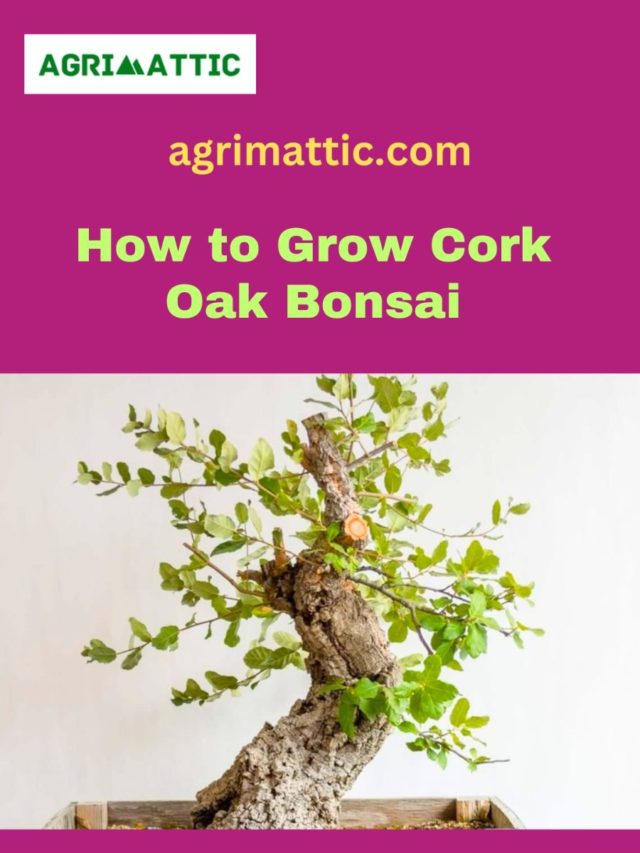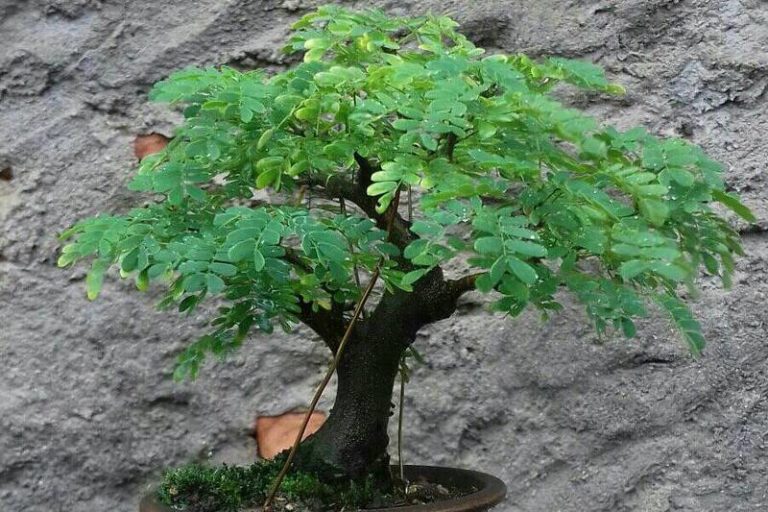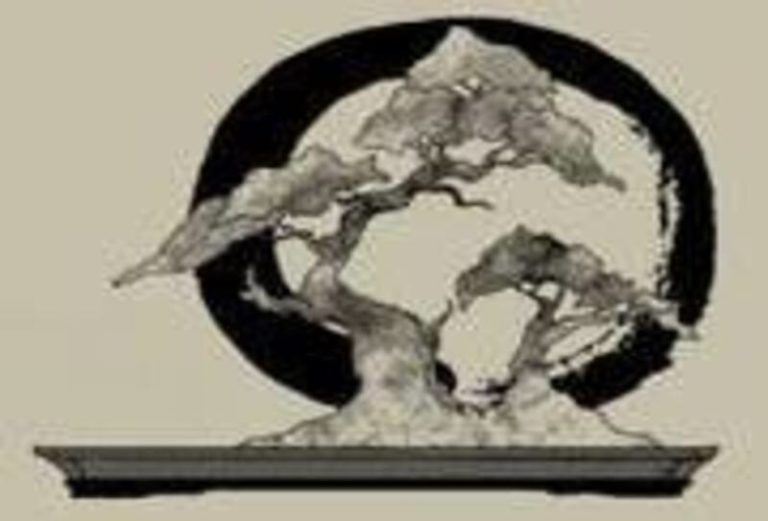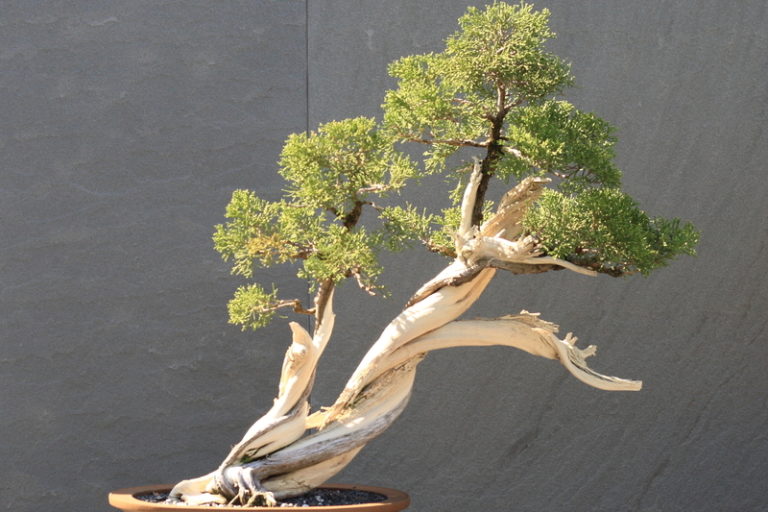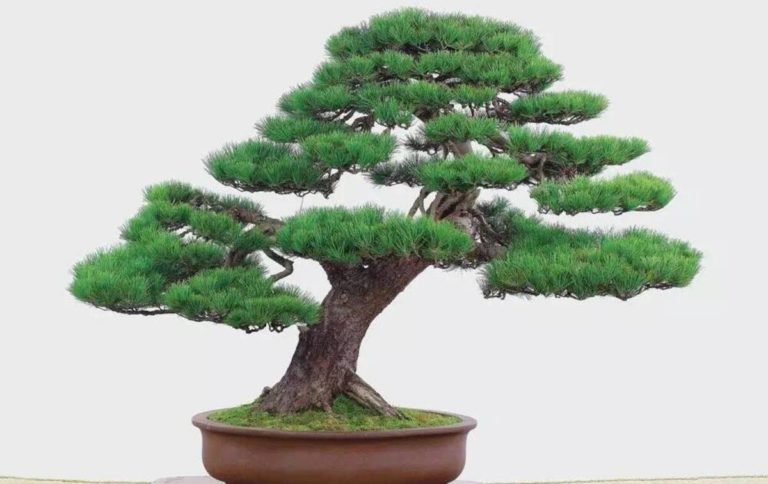Cork Oak Bonsai: The Perfect Gift for Bonsai Enthusiasts and Nature Lovers Alike
Bonsai fans love cork oak bonsai because it is a beautiful and unusual type of bonsai. This guide will tell you everything you need to know about growing and care for cork oak bonsai.
What is Cork Oak Bonsai?
Bonsai lovers love cork oak bonsai, which is a small form of the cork oak tree. It is known for its thick, corky bark and small leaves that stay green all year. Cork oak bonsai is a hardy plant that can be grown both inside and outside with the right care and upkeep.
History and Origins of the Cork Oak Bonsai
The cork oak tree, Quercus suber, is native to the Mediterranean region, including Portugal, Spain, and Morocco. It has been used for thousands of years for cork production, which involves stripping the bark from the tree in a sustainable and controlled way every nine years.
The art of bonsai originated in China over a thousand years ago and was introduced to Japan in the fourteenth century. It entails cultivating and training tiny trees to develop into miniature replicas of their full-sized counterparts.
Because of its resilience and distinctive beauty, the cork oak tree has been utilized for bonsai culture for many years. Cork oak bonsai has grown in popularity in the bonsai community in recent years, with enthusiasts all around the world experimenting with different styles and ways to grow these little trees.
Types of Cork Oak Bonsai
There are several varieties of cork oak bonsai, each with special qualities of its own. The most well-liked varieties include:
Common Cork Oak Bonsai: This is the most widely grown variety of cork oak bonsai. It has a rough, corky bark and small, dark green leaves.
Evergreen Cork Oak Bonsai: This variety of cork oak bonsai has small, glossy leaves that are green year-round.
Dwarf Cork Oak Bonsai: This is a smaller, more compact variety of cork oak bonsai that is perfect for indoor cultivation.
Japanese Cork Oak Bonsai: This variety of cork oak bonsai has a more delicate appearance, with smaller leaves and a thinner, smoother bark.
Spanish Cork Oak Bonsai: This variety of cork oak bonsai has a thick, corky bark and a larger, more rugged appearance than other types.
These are just a handful of the many diverse varieties of cork oak bonsai that may be grown and developed, each with its own special beauty and traits.
Cork Oak Bonsai and its Symbolism
Cork oak bonsai is often associated with strength, resilience, and longevity. The cork oak tree itself is known for its ability to regenerate its bark after being stripped, making it a symbol of sustainability and endurance. Cork oak bonsai needs patience, devotion, and talent to maintain and form as a bonsai tree, making it a symbol of tenacity and perseverance.
Cork oak bonsai is regarded for its beauty and unusual textures, in addition to its symbolic importance, making it a popular option for individuals who admire the art of bonsai. Cork oak bonsai, whether planted inside or outdoors, may be a wonderful addition to any garden or house, serving as a reminder of nature’s strength and beauty.
Characteristics of the Cork Oak Bonsai
Numerous distinguishing characteristics make cork oak bonsai a popular option among bonsai devotees. Here are some of the distinguishing features of the cork oak bonsai:
Bark: The thick, corky, and rough bark of cork oak bonsai trees, which can be peeled off and utilized for a number of things, is one of its most distinctive characteristics.
Leaves: The leaves of the cork oak bonsai are small and dark green and may be evergreen or deciduous, depending on the variety.
Size: Cork oak trees, when trained as bonsai, can reach heights of many feet, depending on their age and the chosen bonsai style.
Trunk: Cork oak bonsai typically have thick, sturdy trunks that taper off towards the top of the tree, giving it a classic bonsai shape.
Roots: The roots of the cork oak bonsai are typically shallow and wide, making them ideal for growing in shallow bonsai pots or trays.
Overall, cork oak bonsai is prized for its unique appearance, hardiness, and ability to thrive in a variety of growing conditions. With proper care and cultivation, cork oak bonsai can live for many years and provide years of enjoyment for bonsai enthusiasts.

How to Grow Cork Oak Bonsai
Cork oak bonsai cultivation may be a productive and pleasurable activity. Here are some pointers for growing and caring for your cork oak bonsai:
Soil: Use well-draining soil that is slightly acidic. A mix of Akadama, pumice, and lava rock is a good choice.
Watering: Water your cork oak bonsai regularly, but make sure not to overwater it. Allow the topsoil to dry out slightly before watering again.
Sunlight: Cork oak bonsai prefer full sun to partial shade. Place your tree in a location where it will receive plenty of sunlight but not direct, scorching sunlight.
Temperature: Cork oak bonsai prefer moderate temperatures between 60 and 80°F. They can tolerate brief periods of cold weather, but it is best to protect them from frost.
Pruning: Prune your cork oak bonsai regularly to shape it and encourage growth. You can prune the branches and leaves to achieve the desired shape.
Fertilization: Fertilize your cork oak bonsai with a balanced fertilizer during the growing season. Reduce the amount of fertilizer during the winter.
Repotting: Repot your cork oak bonsai every two to three years to ensure healthy growth. Choose a pot that is slightly larger than the previous one.
Pests and Diseases: Cork oak bonsai are relatively resistant to pests and diseases. However, watch out for spider mites, scale, and aphids. If you notice any pests, use a gentle insecticide to get rid of them.
By following these tips, you can help ensure that your cork oak bonsai grows healthy and strong, and provides you with years of enjoyment.
Benefits of the Cork Oak Bonsai
In addition to being a beautiful ornamental tree, the cork oak bonsai offers several benefits:
Environmental benefits: The cork oak tree is native to the Mediterranean region and is an important part of its ecosystem. The tree provides habitat for various animals and helps to prevent soil erosion.
Commercial benefits: The cork oak tree is farmed largely for its bark, which is used in the manufacturing of cork. The cork business employs people in numerous nations, and demand for cork is expanding due to its environmental friendliness.
Aesthetic benefits: The cork oak bonsai is a unique and eye-catching addition to any yard or indoor setting. The rough bark and evergreen leaves of the tree make it a beautiful specimen, and its small size makes it perfect for container culture.
Cultural significance: The cork oak tree is culturally significant in many regions of the world, especially in Portugal, where it is regarded as a national emblem. The cork oak bonsai may be a method to connect with this cultural history while also appreciating the tree’s natural beauty.
Overall, the cork oak bonsai offers many benefits, from its environmental and commercial importance to its aesthetic and cultural significance. By growing and caring for a cork oak bonsai, you can enjoy these benefits and contribute to the preservation of this important tree species.
Styling and Design of the Cork Oak Bonsai
Cork oak bonsai trees are known for their beautiful bark and graceful foliage. Here are some tips for styling and designing your cork oak bonsai:
Choose the right pot: Cork oak bonsai trees are best grown in shallow pots that allow their roots to spread out horizontally. Consider using a pot made of clay or ceramic, which will help regulate moisture levels in the soil.
Prune regularly: Pruning your cork oak bonsai on a regular basis is essential for maintaining the ideal form and size. Remove any branches that are dead or broken, as well as those that are growing in the incorrect direction. Maintain the foliage’s proportion and symmetry.
Wire carefully: Wiring can be used to shape the branches of your cork oak bonsai, but it should be done carefully to avoid damaging the tree. Use soft aluminum wire and wrap it gently around the branch, making sure not to cut into the bark.
Choose the right style: Cork oak bonsai trees can be grown in many different styles, including formal upright, informal upright, slanting, cascade, and semi-cascade. Consider the shape and growth pattern of your tree when deciding which style to choose.
Accentuate the bark: The cork bark of the cork oak bonsai is one of its most distinctive features. You can accentuate this by removing any dead or rough bark and applying a light coat of oil or varnish to the remaining bark. This will bring out its natural color and texture.
By following these guidelines, you may construct a lovely cork oak bonsai that will complement any indoor or outdoor location.
How to Care for and Maintain Cork Oak Bonsai
Cork oak bonsai trees are relatively low-maintenance, but they do require some care and attention to thrive. Here are some tips for caring for and maintaining your cork oak bonsai:
Watering: Bonsai trees crafted from cork oak require consistent irrigation, particularly during the growing season. When the soil feels dried to the touch, irrigate the tree, but avoid overwatering, as this can cause root rot. Water the tree gradually with a watering can or pipe, ensuring that the water drains from the bottom of the container.
Soil: Cork oak bonsai trees prefer mildly acidic, well-drained soil. Utilize a soil mixture for bonsai that is abundant in organic matter, such as peat moss or compost. To enhance drainage, you can also add perlite or grit to the mixture.
Sunlight: Cork oak bonsai trees require bright, indirect sunlight to grow and thrive. Place your tree near a window that receives plenty of sunlight, but avoid direct sunlight, which can damage the leaves.
Temperature and Humidity: Native to the Mediterranean, cork oak bonsai trees prefer mild, arid climates. They can tolerate a broad temperature range, but should be protected from frost and extreme heat. You can attain a humidity level between 50 and 60% by positioning a humidity tray near the tree or by misting it with water.
Pruning: Maintaining the shape and health of your cork oak bonsai requires regular pruning. Remove any branches that are diseased, deceased, or growing in the incorrect direction. Additionally, you can prune the foliage to promote new growth and a denser canopy.
Fertilization: Cork oak bonsai trees benefit from regular fertilization during the growing season. Use a balanced, water-soluble fertilizer once a month, or use a slow-release fertilizer that can be applied every few months.
Pest and Disease Control: Even though common bonsai pests such as aphids, spider mites, and scale insects can still damage cork oak bonsai trees, they are comparatively resistant to diseases and pests. Regularly inspect your tree for signs of infestation, and apply the appropriate insecticide if necessary.
By following these maintenance instructions, you can maintain the health and beauty of your cork oak bonsai tree for many years.
Cork Oak Bonsai Care Sheet
| Aspect | Care Tips |
| Watering | Allow the soil to dry out partially before watering. Do not overwater or let the soil become waterlogged. |
| Soil | Use well-draining soil that is rich in organic matter. |
| Sunlight | Cork Oak Bonsai prefers full sun to partial shade. |
| Temperature | These bonsai trees prefer mild to warm temperatures and can tolerate temperatures down to 20°F (-6°C). |
| Humidity | Provide moderate humidity levels, but avoid high levels of humidity that can cause fungal diseases. |
| Pruning | Regular pruning helps to maintain the shape and size of the tree. Prune in the early spring before new growth appears. |
| Fertilization | Feed the tree with a balanced fertilizer during the growing season. |
| Pest and Disease | Watch out for common pests such as spider mites, scale insects, and mealybugs. Treat with a horticultural oil or insecticide if necessary. Cork Oak Bonsai is susceptible to fungal diseases such as root rot, so avoid overwatering and provide good drainage. |
It’s important to note that caring for a Cork Oak Bonsai requires some knowledge and experience in bonsai care. If you’re new to bonsai, it’s best to do some research and consult with experienced bonsai growers to ensure that you’re providing the best care for your tree.
Conclusion
The cork oak bonsai is a distinctive and attractive addition to any garden, whether interior or outdoor. It has a long and storied past and offers numerous benefits. With appropriate care and maintenance, you can appreciate this beautiful plant for many years.
FAQ:
Q: What is Cork Oak Bonsai?
A: Cork Oak Bonsai is a small tree that is grown and trained in a container to resemble a mature Cork Oak tree. It is popular among bonsai enthusiasts for its unique characteristics and ease of care.
Q: How old can a Cork Oak Bonsai live?
A: With proper care, a Cork Oak Bonsai can live for several decades.
Q: Can Cork Oak Bonsai be grown indoors?
A: Cork Oak Bonsai can be grown indoors, but it is recommended to keep them outdoors as they require natural light and air circulation for optimal growth.
Q: How often should I water my Cork Oak Bonsai?
A: The frequency of watering your Cork Oak Bonsai depends on various factors such as climate, season, pot size, and soil type. It is recommended to water thoroughly when the soil is slightly dry to the touch.
Q: Does Cork Oak Bonsai require fertilization?
A: Yes, Cork Oak Bonsai requires fertilization to promote healthy growth and development. It is recommended to use a balanced fertilizer during the growing season.
Q: How often should I prune my Cork Oak Bonsai?
A: Cork Oak Bonsai should be pruned regularly to maintain its shape and promote healthy growth. The frequency of pruning depends on the growth rate and desired shape.
Q: Can Cork Oak Bonsai be propagated?
A: Yes, Cork Oak Bonsai can be propagated through various methods such as seed germination, stem cutting, and air layering.
Q: What are the common pests and diseases that affect Cork Oak Bonsai?
A: The common pests that affect Cork Oak Bonsai are spider mites, scale insects, and mealybugs. The common diseases are root rot, powdery mildew, and leaf spot.
Also Read:


